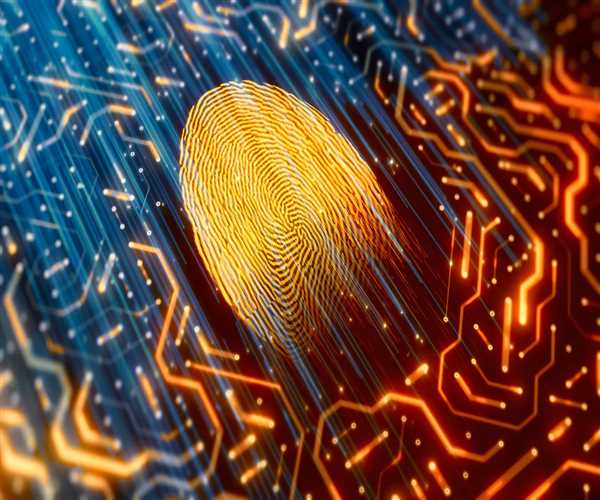Search here

20-Jul-2023 , Updated on 7/20/2023 10:32:09 PM
Beyond Locks and Passcodes: The Cutting-Edge of Mobile Data Security
Highlights
- Biometric Authentication- Embrace the future of mobile security with fingerprint, facial, and iris recognition technologies, ensuring only you can unlock your device.
- Two-Factor Authentication (2FA)- Add an extra layer of protection by combining something you know (password) with something you have (token, fingerprint, or device).
- Encrypted Communication- Implement end-to-end encryption for messaging and data transfer to shield your information from prying eyes.
- App Permissions Management- Control the access apps have to your data, limiting potential vulnerabilities and data leaks.
- Mobile Device Management (MDM)- For businesses and organizations, MDM solutions allow administrators to enforce security policies and remotely manage devices.
- Secure Containers- Create isolated and encrypted environments on your device to keep work and personal data separate and protected.
In the fast-paced digital age we live in, mobile devices have become an integral part of our lives. From communication and entertainment to banking and productivity, we rely heavily on smartphones and tablets for various tasks. With the increased reliance on mobile devices, the importance of mobile data security has grown exponentially. While traditional locks and passcodes offer a basic level of protection, cyber threats have evolved to become more sophisticated, necessitating cutting-edge solutions to safeguard sensitive information. In this article, we will delve into the world of advanced mobile data security, exploring emerging technologies and practices that go beyond the conventional methods of protection.
1. Biometric Authentication: Unlocking with a Touch
One of the most notable advancements in mobile data security has been the widespread adoption of biometric authentication methods. Biometric authentication uses unique physical or behavioral traits of an individual to verify their identity. This includes features such as fingerprints, facial recognition, iris scanning, and even voiceprints. Unlike traditional passwords that can be forgotten, stolen, or easily guessed, biometrics provide a highly secure and convenient method of unlocking mobile devices.

Facial recognition, for instance, uses advanced algorithms to map and identify specific facial features, making it challenging for impostors to deceive the system. Similarly, fingerprint scanning has gained popularity due to its accuracy and speed. As the technology continues to improve, we can expect even more advanced biometric authentication methods to be integrated into mobile devices, ensuring unparalleled data protection.
2. Multi-Factor Authentication (MFA): Fortifying the Fortresses
While biometric authentication significantly enhances security, it is not infallible. To further fortify the security of mobile devices, multi-factor authentication (MFA) has become an essential strategy. MFA combines two or more authentication factors, making it exponentially harder for unauthorized users to gain access to sensitive data.
For instance, MFA may require the user to provide a fingerprint scan (biometric factor) and a one-time password sent to their registered email or phone (knowledge factor). Additionally, some MFA systems utilize geolocation as a factor, ensuring that the device is being accessed from a known and authorized location. This multi-layered approach adds an extra barrier of defense against potential cyber threats, mitigating the risks of unauthorized access.
3. End-to-End Encryption: Shielding Data in Transit
As mobile devices frequently connect to various networks and transmit data across the internet, securing data in transit has become a top priority. End-to-end encryption is a powerful technique employed by various messaging apps and services to ensure that data remains confidential from the sender to the recipient.

In end-to-end encryption, data is encrypted on the sender's device and can only be decrypted by the intended recipient's device, making it nearly impossible for intermediaries or hackers to intercept and decipher the data in transit. Popular messaging apps like Signal and WhatsApp have adopted end-to-end encryption, providing their users with a high level of privacy and data security.
4. Mobile Virtual Private Networks (VPNs): Securing Public Connections
Public Wi-Fi networks have become a breeding ground for cyberattacks. Hackers often exploit these unsecured connections to intercept data transmitted between mobile devices and servers. Mobile Virtual Private Networks (VPNs) have emerged as a critical tool for securing public connections and preserving data integrity.
When connected to a VPN, all the data transmitted between the mobile device and the VPN server is encrypted, safeguarding it from potential eavesdroppers. This is particularly important for users who frequently connect to public Wi-Fi networks at cafes, airports, or hotels. VPNs add an additional layer of security, making it extremely difficult for attackers to intercept and exploit sensitive information.5. Mobile Device Management (MDM): Controlling Corporate Devices
As more businesses embrace the concept of "Bring Your Own Device" (BYOD) and allow employees to use their personal mobile devices for work-related tasks, mobile device management (MDM) solutions have gained prominence. MDM enables businesses to exert control over corporate devices, ensuring that they adhere to security policies and remain protected from potential threats.
MDM solutions allow companies to enforce encryption, implement secure access controls, and remotely wipe devices in case of loss or theft. Moreover, they can separate work-related data from personal information on the device, creating a secure container for corporate applications and data. By centralizing control and monitoring, MDM ensures that corporate devices are secure and compliant with company security standards.
6. Behavioral Analytics: Detecting Anomalies in Real-Time
Despite robust security measures, attackers can sometimes find novel ways to breach mobile data security. Behavioral analytics come to the rescue in such situations, as they can detect anomalies and suspicious activities in real-time.
Behavioral analytics utilize machine learning algorithms to analyze the patterns of user behavior on a mobile device. This includes factors such as typical app usage, typing patterns, location data, and more. When an unusual activity occurs, the system can raise an alert, allowing administrators to take immediate action.
In the digital age, mobile data security has become a paramount concern. Traditional locks and passcodes are no longer sufficient to protect sensitive information from sophisticated cyber threats. As technology evolves, so do the methods employed by malicious actors. Fortunately, cutting-edge solutions such as biometric authentication, multi-factor authentication, end-to-end encryption, mobile VPNs, MDM, and behavioral analytics have emerged to safeguard our data and privacy.

SEO and Content Writer
I am Drishan vig. I used to write blogs, articles, and stories in a way that entices the audience. I assure you that consistency, style, and tone must be met while writing the content. Working with the clients like bfc, varthana, ITC hotels, indusind, mumpa, mollydolly etc. has made me realized that writing content is not enough but doing seo is the first thing for it.
Join Our Newsletter
Subscribe to our newsletter to receive emails about new views posts, releases and updates.
Copyright 2010 - 2025 MindStick Software Pvt. Ltd. All Rights Reserved Privacy Policy | Terms & Conditions | Cookie Policy